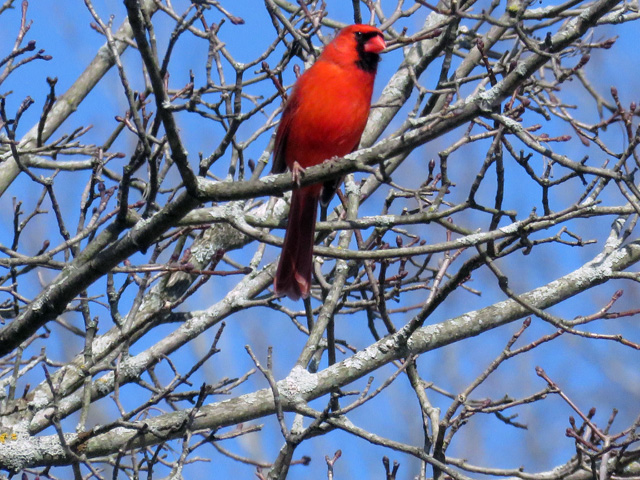
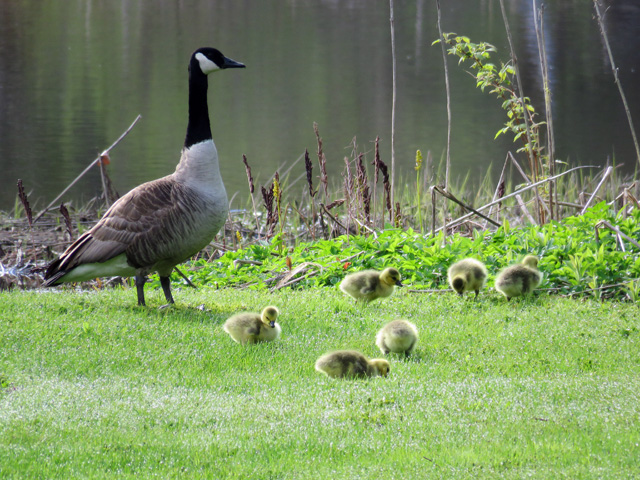
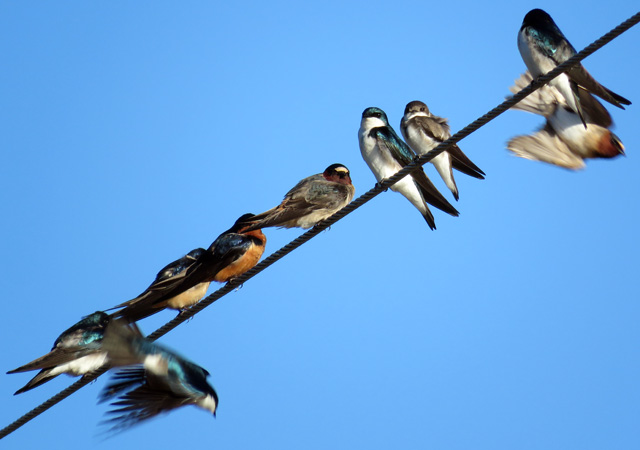
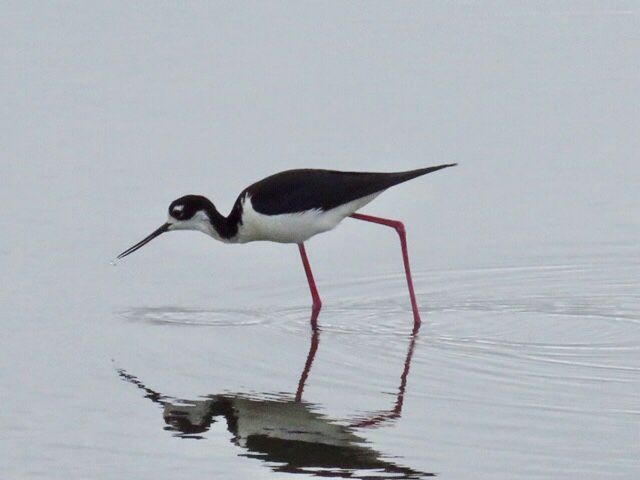
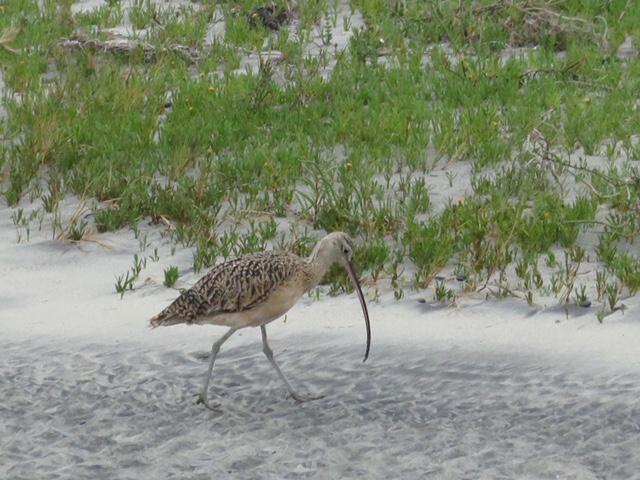
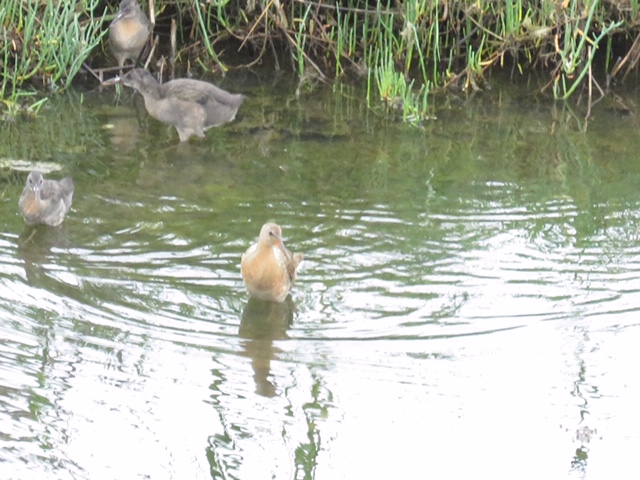
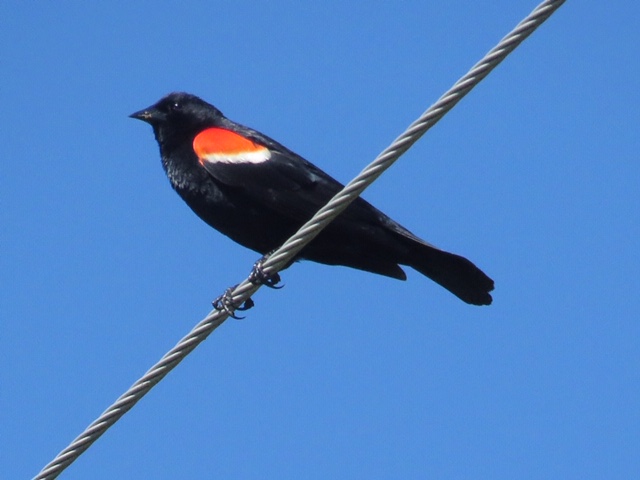








It’s getting to that time when listings of the best of the year come out for many things. Here are some of my best birds of the first quarter of 2019 – nice to remember on a cold December spitting snow day.
We took an abbreviated trip to Florida and later spent several weeks in Arizona.
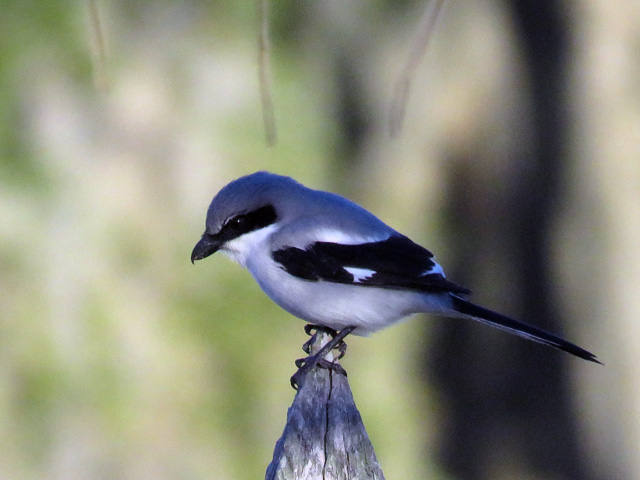
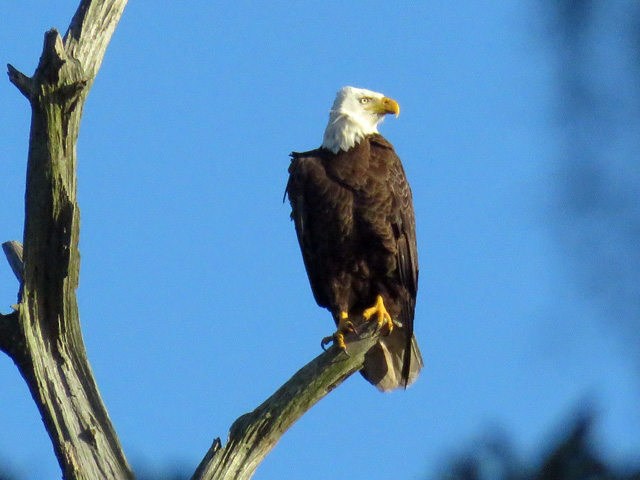
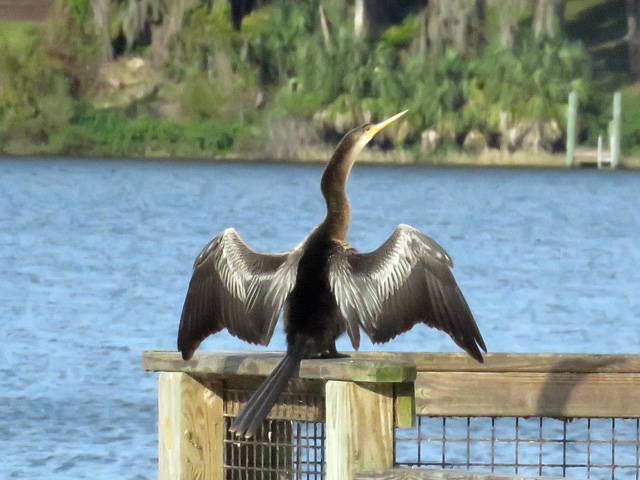
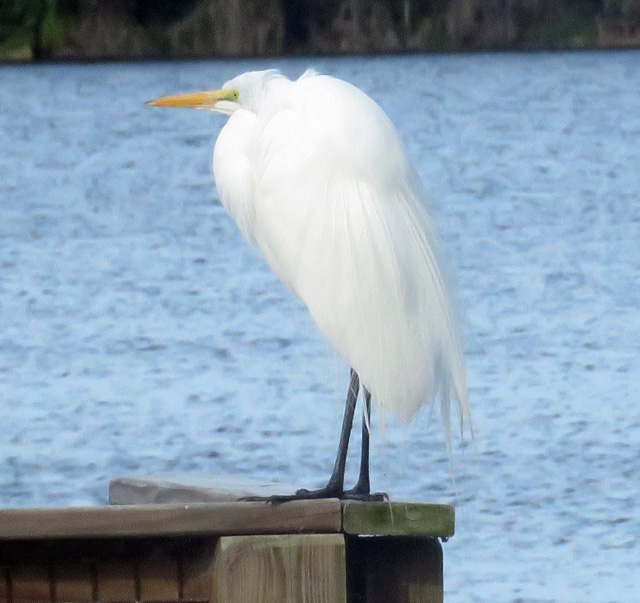
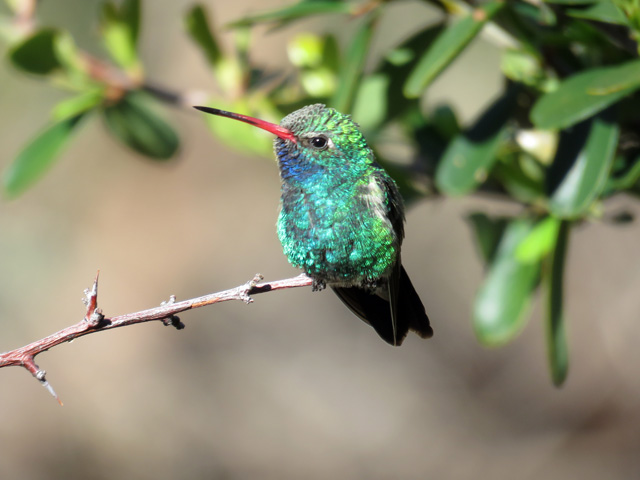
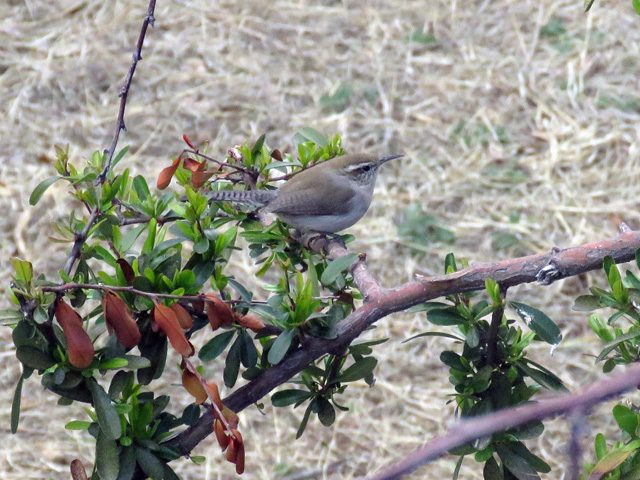
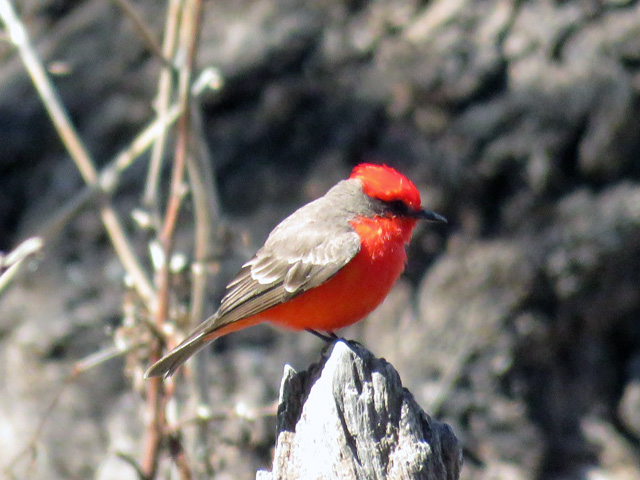
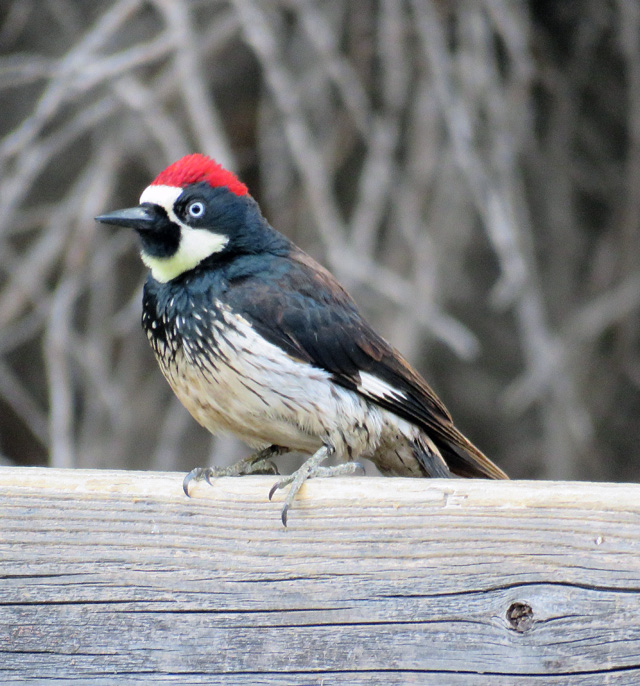
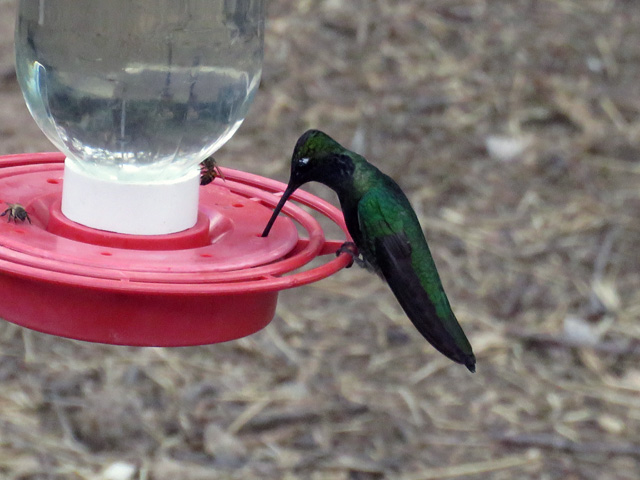
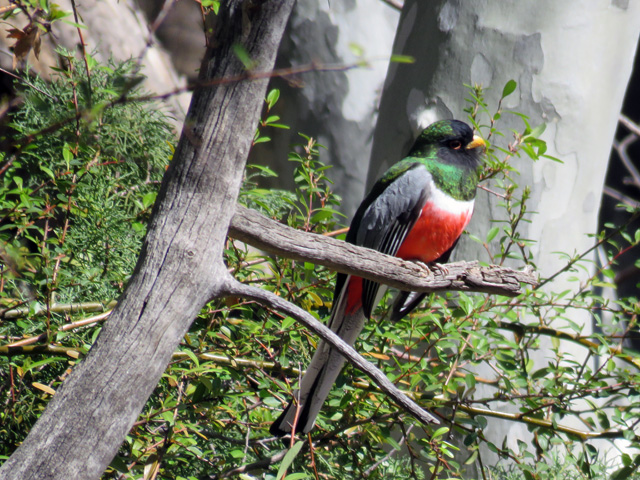
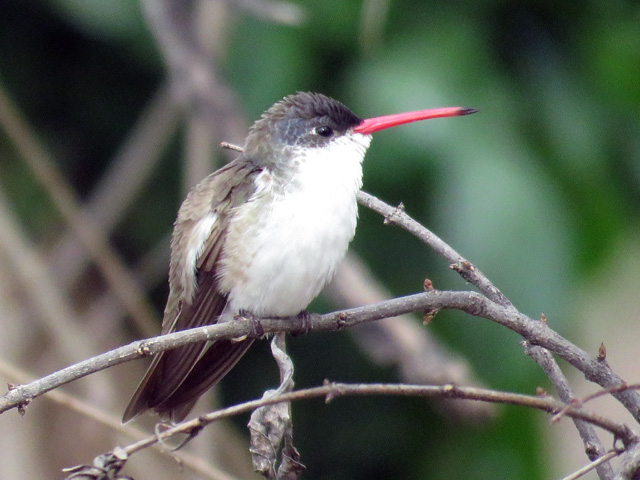
Sani Isla is a community of about 600 Kichwa indigenous people nestled along the Napo river deep in the Ecuadorian Amazon. The Sani Lodge is their main source of income but in looking to diversify, the women in the community expressed their desire to revitalize traditional handicrafts. The handicrafts could provide a new income stream from sustainably sourced forest materials and help promote the traditional artisan practices of the Kichwa, strengthening their self identity and celebrating their way of life while protecting their forest home. We visited them for lunch, and to experience some of their culinary and celebration practices. It was great to do a little to support their efforts.
We were welcomed by some of the women of the community and fed some traditional food.

Chip, our leader was one of the brave who after biting the grub’s head off, proclaimed the treat tasty. Most of us were unconvinced.
After lunch, our guide gave a brief talk about hunting with a blowgun and asked for a volunteer to fire one. I stepped up and after instructions, completely “blew it” with the dart only going about 50 feet. Provided some post-lunch humor at least.
Then we had some face painting such as was done for celebrations and festivals.
It was a nice outing. We bought chocolate and hand-made baskets and other items. Fifteen school kids joined us on the ride back to Sani Lodge, saving the school boat a run. Little did we know that the next day’s trip on the Rio Napo back to Coca would be much more hair-raising.
As I mentioned in the last post, I am a pilot who is afraid of heights. No fire tower climbing for me, thank you, and I have to watch out for any hikes that have drop-offs, and I usually drive in the center lane of big suspension bridges. So in reading about the trip, I was concerned about the tower at Sani. It’s “only” 100 feet tall, next to a big Kapok tree, nothing to it. Not!
I was about the last to climb and it was challenging. The higher I got, the more of a death grip I had on the railing. But I made it, crossed the final catwalk to the platform and once there, was able to relax a bit and enjoy the scenery and the birds.
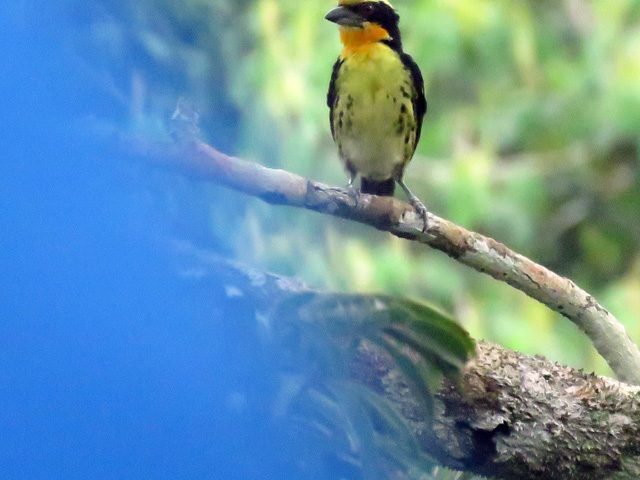
This Gilded Barbet was another lovely find.
We saw and or heard over 90 species in the five hours we were out — including a rare Harpy Eagle (spotted by our guide, Olger Licury.) It was a great outing.
This was not a “roughing it” trip — no sleeping on mats or eating rice and beans. We birded pretty intensely at times but always returned to great meals and nice beds. Even the box lunches were pretty amazing. Isidro was particularly special.
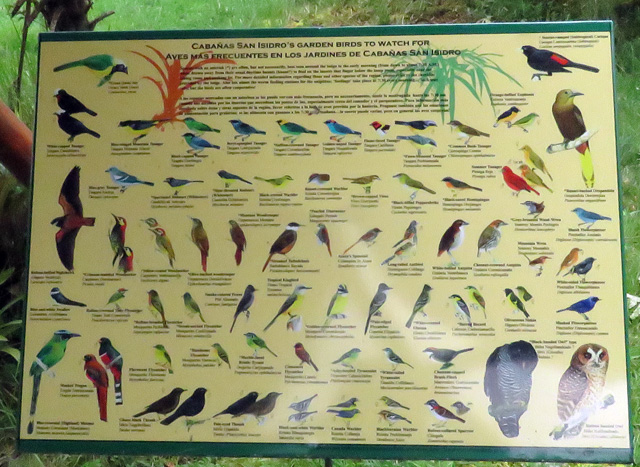 There is a wide variety of birds around and hummers everywhere.
There is a wide variety of birds around and hummers everywhere.
On one of our outings, we stopped at a nearby village to bird and relax.
I generally do not take pictures of food but the meals we returned to deserved some documentation for their artistry and taste.
That evening, after a unproductive owl prowl, we rested for a long travel day by bus, boat, and canoe to the Amazon Rainforest and four exciting days with a whole array of birds and other wildlife.
We left the lush western slope of the Andes, heading toward Quito. As we descended into arid conditions caused by the mountains and warmed up for the first time in days as we took a short walk, spotting among other things, a Giant Hummingbird.
Further down the highway, we pulled off into a small community where the original monument marking the Equator stands. There is a larger one in Quito, aimed at tourists, but this apparently is the real deal.
Sally took some photos of the little community.
Crossing through Quito, we started a major climb up the eastern slope of the Andes, pausing for lunch where we met these school kids returning home.
Turning off the major highway, we explored the paramo, the higher terrain above the tree line where we encountered several new species, including Andean Hillstar hummingbird and this uncommon Red-rumped Bush-Tyrant. (Love that name)
We were climbing up to Papallacta Pass to try to find the Rufous-bellied Seedsnipe.
It was an effort to get out of the bus and trek behind our guide but we all took our time and soon, just as we were thinking of heading back, a shout up ahead announced a sighting. We saw two seedsnipes — this shot pushed the limits of the SX-60 point and shoot.
We did it and were soon back on the warm bus and backtracking down the windy dirt road to continue our journey to Guango Lodge. It was great to get down to an altitude where the air had some meat to it.
We arrived at the new lodge to find a new group of humingbirds – no rest for the weary.
We arrived at Tandayapa Lodge, a lovely site located within the verdant cloudforest on the western slope of the Andes. In spite of a long day of birding already, we spotted the wonderful balcony with many feeders and dozens of hummingbirds. We were slow to check into our rooms with all the action underway.
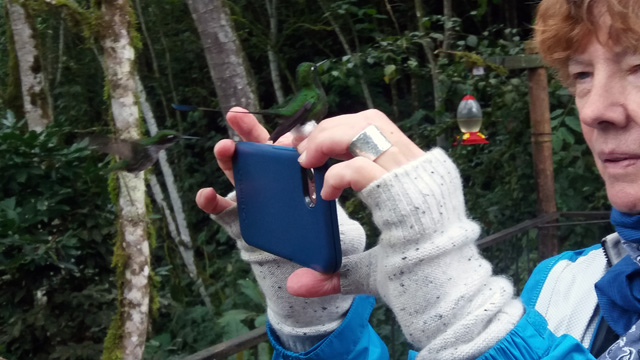
Throughout our stay, hummers came for hand-feeding. These found Sally’s Iphone and finger intriguing. Photo credit: Kate Thompson
As would be our habit, we were up for breakfast and on the bus before light. It was cool and foggy but just after we got to our hiking spot and had started to walk, our guide heard and then spotted the bird of the day, a Plate-billed Mountain-Toucan.
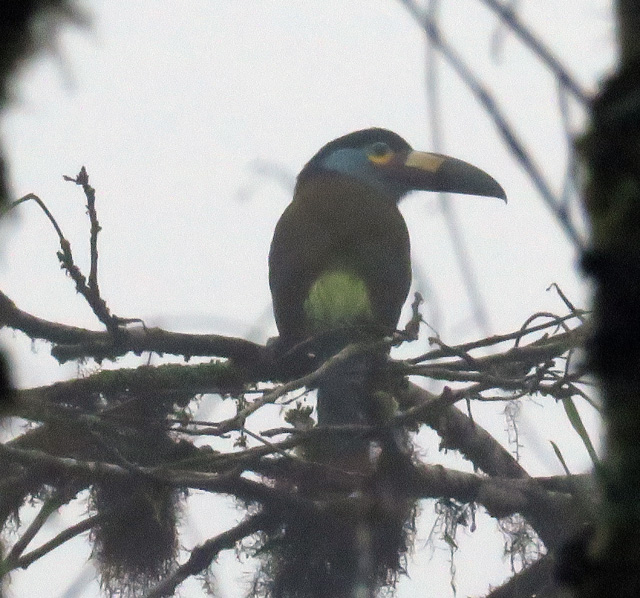
Plate-billed Mountain-Toucans inhabit a restricted range and are listed as near threatened. They are threatened both by deforestation and subsequent habitat loss, and by illegal capture for the pet trade.
After birding a couple of hours, we boarded the bus and were descending this winding dirt road when the guide yelled “stop”, we bailed out to seeing him holding an earthworm.
We no sooner had loaded back up and driven a kilometer when the bus stopped and off we trooped to see a big, bad tarantula crossing the road. We watched her – she was almost the size of my hand.
One of the things we did on this foggy day, since the birds were relatively quiet, is to delight in the flowers we encountered. I’ll share them with you in the next post. Adios, amigos.
We arrived in Quito Sunday night and have spent a couple of days at the Tandayapa Lodge from where we have visited several local hotspots. Here are just a few shots to give an idea of the neat birds we are seeing.
Tomorrow we head eastward to new environs and a whole array of new bird species.
I was out walking the dog before daylight, listening to the morning chorus of birds and frogs when far off, I heard a Great Horned Owl hooting. After another coffee and bagel it was getting light out so Penny and I headed out for another jaunt, this time with my binoculars and camera. Not much was moving – we seem to be overflown by migrants – until I took a side trail, noticed some movement, and spotted this owl. It was very large, facing away from me, but turned periodically to check us out. It was difficult, with the limbs and lighting, to get a decent photo but a great start to the day.
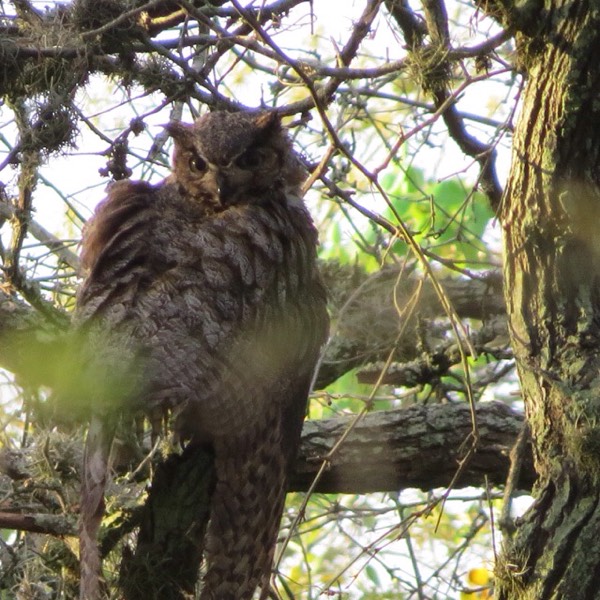
We had planned to go over to Port Aransas for the morning for some birding and after an easy drive and short ferry ride, were at the wastewater treatment facility – one of our favorite birding spots. The Leonabelle Turnbill Birding Center has hundreds of waterfowl that are used to visitors and just hang out on the facility’s ponds. Boardwalks and spotting scopes make this popular and very productive. Here are a couple of Roseate Spoonbills overhead (most are getting their breeding plumage).
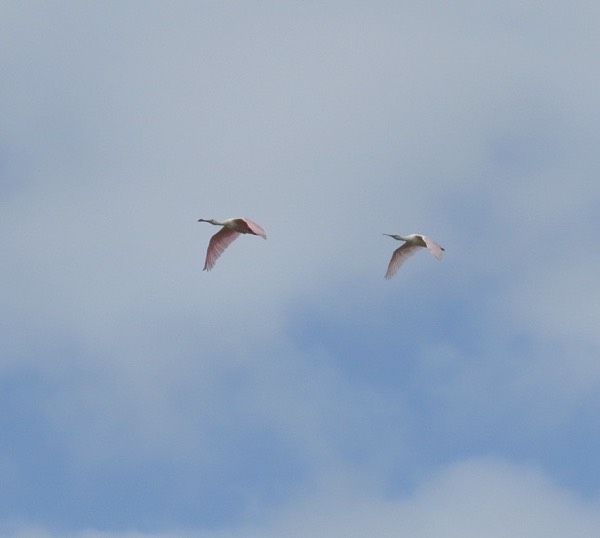
We had Cinnamon, Blue-winged, and Green-winged Teal.
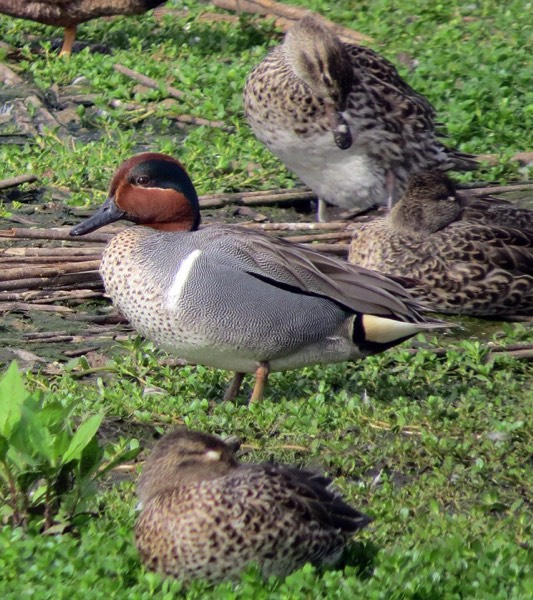
Ruddy Ducks in breeding plumage were eye candy for Vermonters.
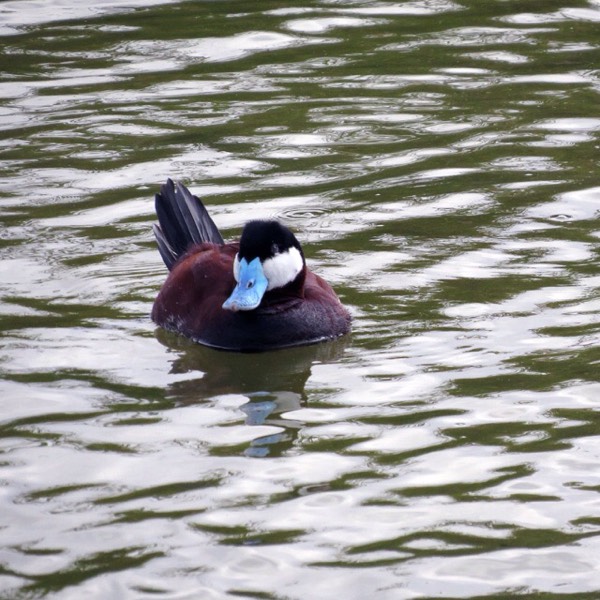
Even this Common Moorhen looked pretty spiffy trotting along.
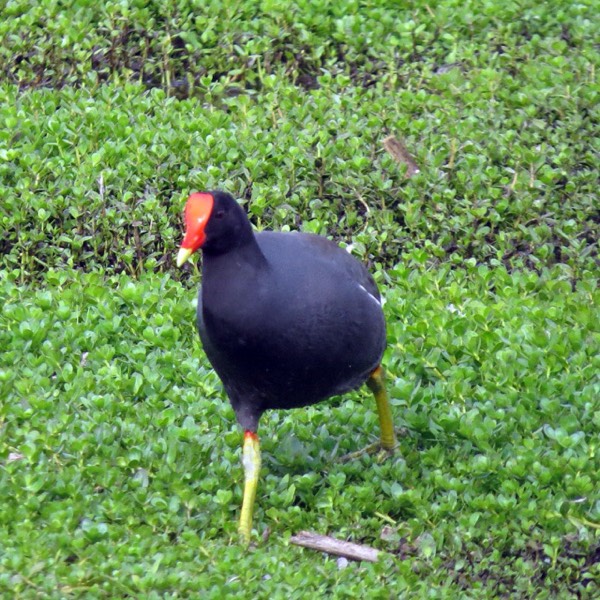
We took a drive down to the beach, just to see it again. I noticed a flight of about thirty Brown Pelicans flying very low coming up at us so I stopped the truck and grabbed a shot. As an aviator, I admire their flying skills and love to watch them in formation.
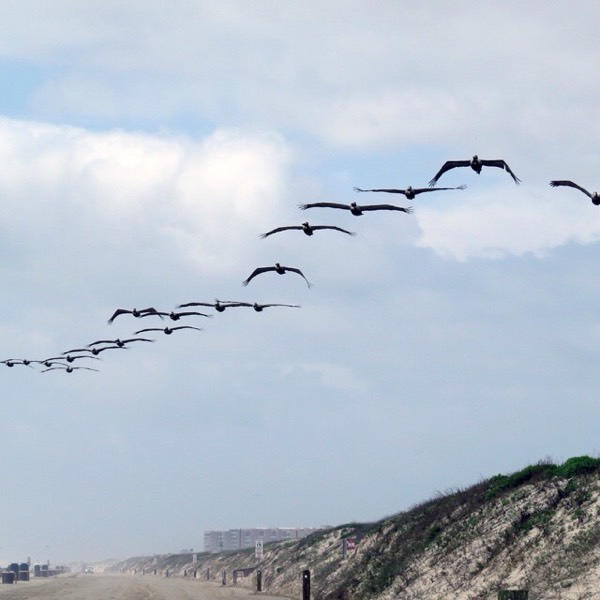
On the way home, we picked up some healthy lunches from "The Shack," a local barbecue place. Afterward, I felt a bit like this Black Vulture which I saw later on – fat, dumb, and in need of a nap.
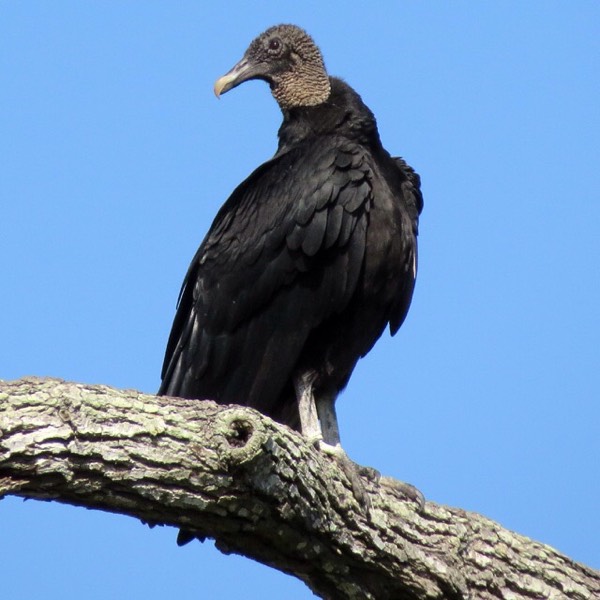
I fell in love with birding about four years ago and one of the reasons was a trip we made to Salineño, Texas. Driving there, we were stopped by a pleasant Border Patrol officer who was exiting the rutty dirt road that goes down to the site. A Vermont couple with a dog did not interest him — we essentially just exchanged greetings. It was our first encounter with the sensitivity of the area where you can essentially wade the Rio Grande. (And people have for decades, and still do.)
Entering a tract, which has been a famous birding spot since the 1970’s, we encountered a small group of birders sitting in lawn chairs watching the many bird feeding stations. And what an array of great birds Mary and I saw: Green Jays everywhere, Great Kiskadees, and all three orioles (Altimira, Hooded, and Audubon’s.) It was an immersion into a new world of color and activity, just amazing. The Hooded Oriole was the first of ten life birds I’ve gotten there during a half-dozen visits.
Salineño is a must-stop on any birding tour of the area. The parking lot, right on the river, is a great spot for all sorts of birds. We were there in 2012, arriving just as a large tour group came out of the woods, excited about some of their observations. They had seen Red-billed Pigeons in the trees far up the river. As they were just about to stow their gear and head to their next destination, their leader yelled, “Ducks – Muscovy’s” as a flight of four came right over us. It was a lifer for me and I’m sure, many of the group members. They piled happily into their cars to hit their next destination.
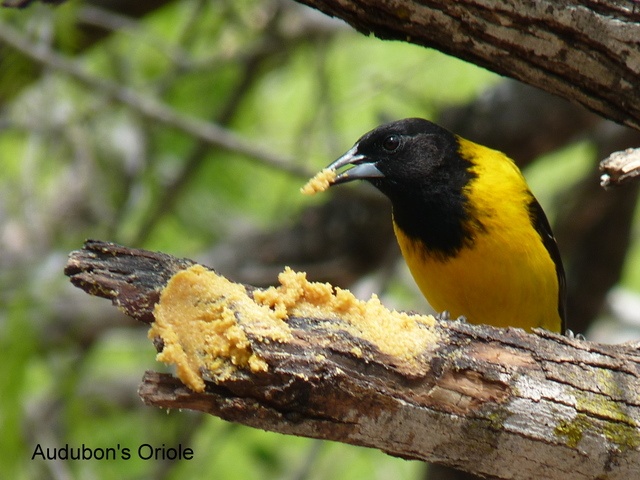
A predominantly Mexican bird, the Audubon’s Oriole reaches the United States only in southern Texas.
For many years, the little tract of wooded land were we visited the feeders was owned and maintained by Pat and Gail DeWind who then sold it to the Valley Land Fund, a non-profit that protects over 10,000 acres of land up and down the Rio Grande Valley. Volunteers, led by Cheryl Longton of Massachusetts, have maintained the feeders each winter, relying on donations from birders and others. Last winter, the site was closed and the feeders moved just north to Fish and Wildlife land but it is expected that the original site will re-open this winter.
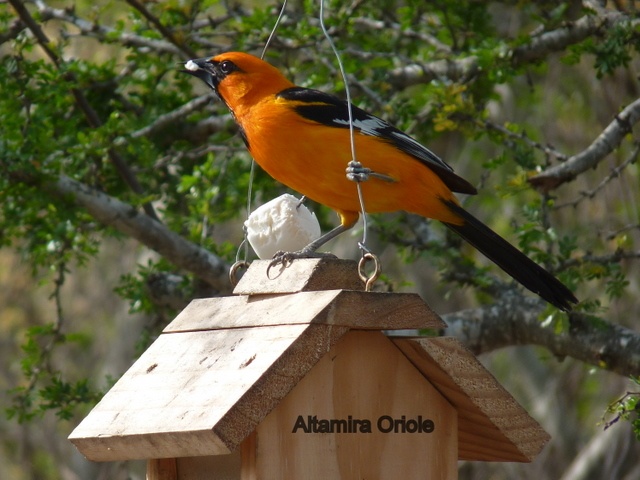
The Altamira Oriole is a bird of Mexico and Central America whose range just reaches into southern Texas. They are often seen at Salineño.
The woodland along the River at Salineño is an excellent spot for finding Valley birds such as Audubon’s Oriole, White-tipped Dove, Groove-billed Ani (summer is best), Long-billed Thrasher, Green Jay, and (now infrequently) Brown Jay. The parking lot is a great gathering spot for birders and a favorite spot to wait for fly-by kingfishers (all three species), Muscovy, or Hook-billed Kite. While standing at the River, you may see such waterbirds as Least or Caspian tern, Black Skimmer, various large waders, and Ring-billed Gull. During spring, Bank Swallows, Indigo Buntings, and Dickcissels stream across the River from Mexico. In winter, the River may be filled with both dabbling and diving ducks. Mergansers and (rarely) scoters occur as well. Check the boulders in winter for Black Phoebe and Spotted Sandpiper.
One of the target birds on our last trip was the Brown Jay. One had been seen fairly reliably before we got into the area but on several tries at Salineño (you just missed it!) and up the river at another spot, we finally waited it out at the feeders and watched as a juvenile ate his heart out. Birders from all over the country and Canada were snapping pictures. As was I.
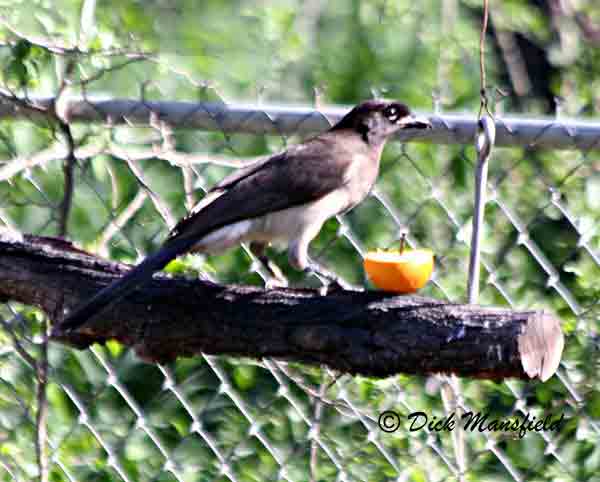
Brown Jays are resident of a short stretch of Rio Grande corridor from about Salineño to the woodlands below Falcon Dam
So, make Salineño a stop on a trip to the area. Many birders also hit Chapeno, Falcon Dam, Falcon State Park, and work their way up to Zapata. A list of potential birds is mouth-watering: White-collared Seedeaters, Pyrrhuloxia, Harris’ Hawk, Verdin, Scaled Quail, Golden-fronted and Ladder-backed Woodpeckers, Cactus Wren, Black-throated Sparrow, Long-billed and Curve-billed Thrasher, and Chihuahuan Raven. Good Birding, indeed!
Sign up by RSS feed or via email to have future articles sent to you.